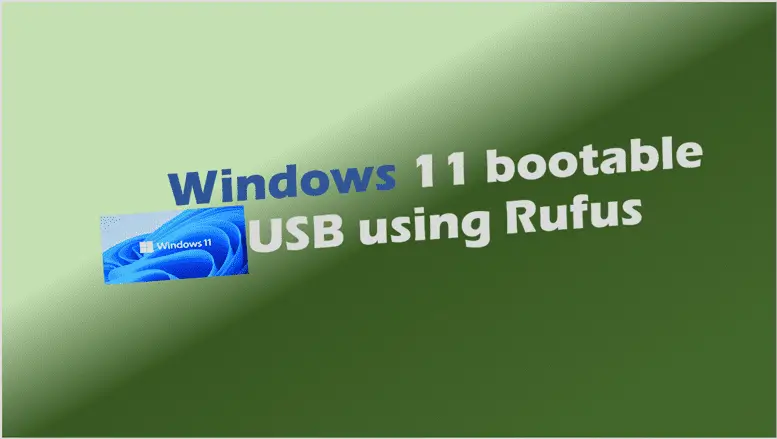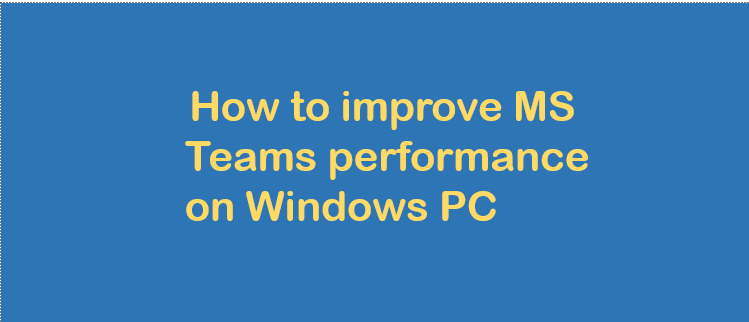How to Install Windows on Chromebook: The Ultimate Guide for IT Users
Discover the secrets to install Windows on Chromebook. Our expert guide walks you through the process, potential challenges, and alternatives. Expand your IT skills today!
Introduction – Install Windows on Chromebook
In the ever-evolving landscape of technology, Chromebooks have carved out a niche for themselves as lightweight, user-friendly devices perfect for web-based tasks. However, many IT professionals and power users find themselves yearning for the versatility and software compatibility of Windows. If you’ve ever wondered, “Can you install Windows on a Chromebook?” or “How to install Windows on a Chromebook?”, you’re in the right place. This comprehensive guide will walk you through the process of transforming your Chrome OS device into a Windows powerhouse, opening up a world of possibilities for your Chromebook.
Key Takeaways
Before we dive into the nitty-gritty, here are the core points to remember:
- Installing Windows on a Chromebook is possible but comes with risks and challenges.
- You’ll need a compatible Chromebook, sufficient storage, and technical know-how.
- The process involves enabling Developer Mode, flashing custom firmware, and creating Windows installation media.
- Alternative options like using Parallels Desktop or web-based Windows applications exist for those hesitant about full installation.
- This process will void your warranty and may affect your device’s performance and security.
Prerequisites for Installing Windows on a Chromebook
Before you embark on this technical adventure, ensure you have the following:
- A compatible Chromebook (check CoolStar’s hardware compatibility list)
- At least 32GB of internal storage (64GB or more recommended)
- A USB flash drive (8GB or larger) for the Windows installation media
- A separate Windows PC to create the installation media
- A USB keyboard and mouse
- A valid Windows license
Checking Chromebook Compatibility
Not all Chromebooks can run Windows. Compatibility depends on several factors:
- Processor type: Intel or AMD x86 processors are more likely to work
- Available storage: 32GB minimum, 64GB or more recommended
- RAM: 4GB minimum, 8GB or more recommended
- BIOS/UEFI support: Essential for booting Windows
To check if your Chromebook is compatible, consult CoolStar’s hardware compatibility list or search for your specific model online.

Step-by-Step Guide to Install Windows on Chromebook
Step 1: Prepare Your Chromebook
- Back up your data: Installing Windows will erase all local data on your Chromebook.
- Turn off your Chromebook: Completely shut down the device.
- Remove the Write Protect Screw:
- This step requires opening your Chromebook, which may void the warranty.
- Consult teardown guides for your specific model to locate the screw.
- Enter Developer Mode:
- Press
ESC + Refresh + Powersimultaneously. - At the recovery screen, press
CTRL + Dto enable Developer Mode. - The process may take 10-15 minutes and require several reboots.
- You’ll need to press
CTRL + Dat each boot to bypass OS verification.
Step 2: Flash Custom Firmware
- Open a terminal by pressing
CTRL + ALT + T. - Download and run the firmware flashing script:
cd; curl -LO https://mrchromebox.tech/firmware-util.sh && sudo bash firmware-util.sh- Select and install the UEFI firmware option.
cd; curl -LO https://mrchromebox.tech/firmware-util.sh && sudo bash firmware-util.sh
Step 3: Create Windows Installation Media
- On a separate Windows PC, download the Windows ISO from Microsoft’s website.
- Create a bootable USB drive using the Windows Media Creation Tool or Rufus.
- Rufus offers more customization options and can create Windows-To-Go drives.
Step 4: Install Windows on Chromebook
- Insert the bootable USB drive into your Chromebook.
- Boot your Chromebook from the USB drive:
- You may need to press a specific key (often ESC or F12) to access the boot menu.
- Adjust the boot order in the BIOS/UEFI if necessary.
- Follow the Windows installation prompts:
- Choose your language and region.
- Enter your product key when prompted.
- Select the installation type (usually “Custom” for a clean install).
- Partition the drive as needed.
- Wait for the installation to complete and set up Windows.
Step 5: Install Necessary Drivers
After Windows is installed, you’ll need to install drivers for your Chromebook’s hardware:
- Use Windows Update to fetch available drivers automatically.
- Visit the manufacturer’s website for your Chromebook’s chipset and peripherals.
- Install drivers for:
- Touchpad/touchscreen
- Audio
- Wi-Fi and Bluetooth
- Power management
Potential Challenges and Solutions
Driver Compatibility Issues
Challenge: Windows may not recognize all Chromebook hardware out of the box.
Solution:
- Use Windows Update to fetch available drivers.
- Visit the manufacturer’s website for specific drivers.
- Consider using third-party driver update tools as a last resort.
Performance Concerns
Challenge: Chromebook hardware is optimized for Chrome OS, not Windows.
Solution:
- Expect slower performance, especially on lower-end models.
- Optimize Windows for performance by disabling unnecessary visual effects.
- Consider using lightweight alternatives to resource-heavy applications.
Boot and BIOS Issues
Challenge: Some Chromebooks may have trouble booting into Windows.
Solution:
- Ensure you’ve flashed the correct firmware for your model.
- Check BIOS/UEFI settings and adjust as needed.
- Consider creating a Windows-To-Go drive as an alternative.

Alternatives to Full Windows Installation
If you’re hesitant about installing Windows directly on your Chromebook, consider these alternatives:
1. Parallels Desktop for Chrome OS
- Officially supported way to run Windows on certain Chromebooks.
- Requires a Chrome Enterprise Upgrade and a Parallels Desktop license.
- Offers good integration between Chrome OS and Windows.
2. Using Web Applications
- Many Windows applications have web-based alternatives.
- Google Workspace can replace Microsoft Office for many users.
- Web apps don’t require installation and work across platforms.
3. Linux on Chrome OS
- Chrome OS’s Linux support (Crostini) allows running many Linux applications.
- Can be a good middle ground for users needing more powerful software.
- Doesn’t require modifying system firmware or voiding warranty.
FAQ: Installing Windows on Chromebook
- Q: Can you install Windows on a Chromebook?
A: Yes, it’s possible to install Windows on many Chromebook models, but it requires technical expertise and may void your warranty. - Q: How do I install Windows 10 in Chromebook?
A: The process involves enabling Developer Mode, flashing custom firmware, creating Windows installation media, and then installing Windows using that media. - Q: Can we install Windows on Chromebook without removing Chrome OS?
A: While some setups allow dual-booting, it’s complex and not recommended for beginners. Most installations replace Chrome OS entirely. - Q: What are the risks of installing Windows on a Chromebook?
A: Risks include voiding your warranty, potential hardware damage, and reduced security compared to Chrome OS. - Q: How do I access crosh to start the Windows installation process?
A: Open crosh by pressingCTRL + ALT + Ton your Chromebook’s keyboard. - Q: Are there any Chromebook-specific Windows drivers?
A: While there aren’t Chromebook-specific drivers, you’ll need to find and install drivers compatible with your Chromebook’s hardware components. - Q: Can I switch back to Chrome OS after installing Windows?
A: Yes, but it requires creating Chrome OS recovery media and may involve reflashing the original firmware. - Q: Will Windows run well on my Chromebook?
A: Performance varies depending on your Chromebook’s specifications. Lower-end models may struggle with Windows. - Q: Is it legal to install Windows on a Chromebook?
A: While not illegal, it may violate your Chromebook’s terms of service and will void the warranty. - Q: What version of Windows should I install on my Chromebook?
A: Windows 10 is generally more compatible with older hardware, while Windows 11 has stricter requirements. Choose based on your Chromebook’s specifications and your needs.
Conclusion
Installing Windows on a Chromebook is a complex but rewarding process that can significantly expand your device’s capabilities. By following this guide, you can transform your Chromebook into a versatile machine capable of running a wide range of Windows applications. However, it’s crucial to weigh the benefits against the risks and consider alternatives if you’re not comfortable with the technical challenges involved.
Remember, this process will void your warranty and may affect your device’s performance and security. Always ensure you have a backup plan and proceed with caution. Whether you choose to install Windows, use alternatives like Parallels Desktop, or stick with Chrome OS, the key is to find the solution that best fits your needs and technical comfort level.
For IT users looking to push the boundaries of their Chromebooks, installing Windows opens up a world of possibilities. Just be sure to approach the process with patience, careful planning, and a willingness to troubleshoot along the way. Happy installing!
Posts Related to Install Windows on Chromebook:
More Information:






